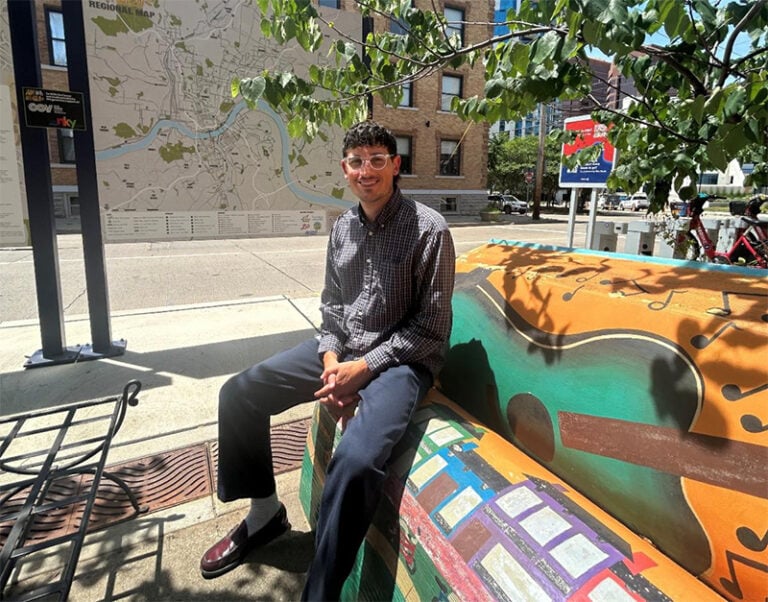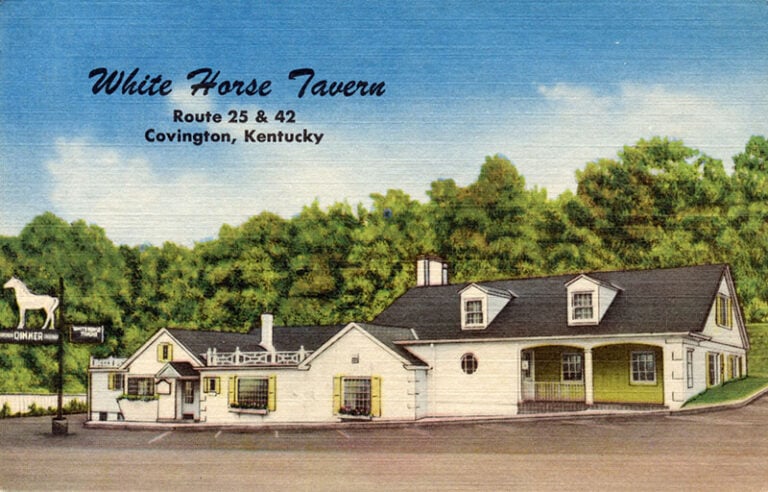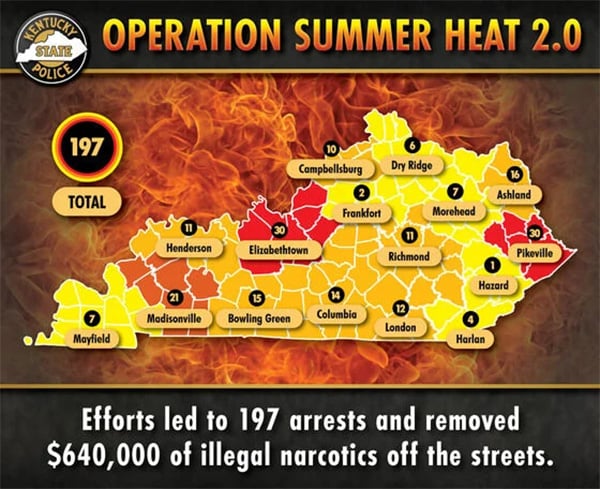Speeding wrecks lives ― and not just for the speeder. AAA is warning that going over the speed limit or driving too fast for conditions not only puts the driver’s life in danger but the lives of other road users as well ― often with deadly results.
“Speeding is dangerous regardless of how advanced your driving skills are,” says Lori Weaver Hawkins, public affairs manager, AAA Blue Grass. “It is dangerous for the driver and all those around them.”
Speeding makes it more difficult to control a vehicle, extends the stopping distance and reduces the ability to steer safely around another vehicle, pedestrian or hazard in the roadway. Speeding also increases crash severity, resulting in more fatalities and severe injuries from the impact. It can even make it more difficult for other road users to judge the distance between themselves and the speeder.
Speeding by the numbers

According to the National Highway Traffic Safety Administration (NHTSA), speeding accounts for 29% of all traffic-related fatalities nationwide.
In 2021, there were 12,330 people killed in speeding-related crashes nationwide, an 8% increase over the previous year, according to NHTSA. Speeding accounted for more than 1,000 fatalities a month on average. Of those killed in speeding-related crashes that year, 599 were pedestrians and 84 were bicyclists. Speed also plays a significant role in fatalities involving roadside workers, including the roadside death of a tow technician every six days, as well as law enforcement and other first responders. Speeding is a factor in 37% of fatal crashes in construction or road maintenance zones, according to NHTSA.
Statistically, some drivers are at greater risk for speeding than others, with age and gender among the primary factors. NHTSA data shows that in 2021, 24% of drivers aged 18-44 years who are involved in fatal crashes were speeding at the time of the crash.
Young male drivers in particular account for a higher proportion of speeding crashes. Overall, 35% of male drivers aged 15 to 20 years involved in fatal crashes were speeding, while 31% of male drivers aged 21 to 24 years were speeding when involved in fatal crashes, according to NHTSA.
Kentucky State Police data shows there were 1,198 crashes related to excessive speed in 2022, resulting in 817 injuries and 123 fatalities. Male drivers were involved in 92% of all speeding-related fatal crashes last year in Kentucky, with males under the age of 40 accounting for 63% of speed-related fatal crashes.
Speeding while driving impaired becomes a deadly combination. Of drivers involved in fatal crashes nationwide, 37% were speeding with a blood alcohol concentration of .08 or more.
NHTSA data also shows that local roads are more dangerous than highways when it comes to speeding. In 2020, 87% of all speeding-related traffic fatalities on American roads occurred on non-Interstate roadways. Speeding was a factor in slightly more fatal crashes on wet roads than on dry pavement.
What drives the need for speed?
A study on driver behavior and performance released by the AAA Foundation for Traffic Safety found that while 63% of drivers believe police would likely apprehend them for traveling 15 mph over the speed limit on a freeway, approximately half reported engaging in the behavior in the past month.
While some drivers habitually speed because they see no harm in it, speeding is considered a form of aggressive driving. In some cases, speeding occurs because a person is angry behind the wheel, frustrated by traffic congestion or trying to make up time because they are running late.

However, it is unlikely habitual speeders consider their behavior to be aggressive ― nor even wrong. In fact, according to the American Psychological Association (APA), many drivers think of speeding as “normal.” Compounding the issue is that unlike other bad driving behaviors, like impaired driving, speed is glorified in popular culture, beginning at a very young age.
Drivers who habitually speed are convinced they won’t lose control of their vehicle and have a false sense of confidence in their driving skills. The APA says that consistently across studies, men and young drivers are especially prone to hold this optimism bias when comparing their driving to that of their peers.
Surprisingly, the roadway surroundings can play a role in whether a driver speeds―but not in the way you may think. Research shows that habitual speeders determine how fast to drive based on cues from the road and neighborhood. Altering the environment, not with speed bumps but with things like small parks and bike lanes, has been shown to result in drivers reducing their speed, according to the APA.
Regardless of the reason a driver is speeding, the consequences in terms of injuries and fatalities remain the same.
Costs of speeding
Weaver Hawkins says if the dangers speeding poses for themselves and others doesn’t deter speeders, their habit may be curbed when they consider the hit speeding can take on their wallet. Speeders face economic consequences, such as fines and court costs, insurance deductibles, legal costs and even the increased cost of fuel consumption and tire wear.
Another cost of speeding that affects all vehicle owners is the increase in insurance premiums. While impacts vary widely, a Forbes Advisor Analysis earlier this summer suggests that nationwide, a speeding ticket raises premiums 24% or about $380 per year on average. However, many factors affect how much a speeding citation will raise an individual’s insurance premiums, including:
• Prior driving record, including other traffic violations and at-fault vehicle crashes
• Whether the speeding citation was a first offense
• Amount of time since the last moving violation
• Number of miles per hour over the speed limit cited
“Individuals who have received citations for excessive speed can expect to pay higher insurance premiums for several years. How much more they’ll pay varies and depends on a number of factors,” says Dan Scroggins, Vice President, Personal Lines, AAA Club Alliance. “Just as speeding puts the driver in harm’s way along with others on or near the roadway, the financial burden is also shared. Insurance is in the business of spreading risk. When drivers practice poor driving behaviors that result in more claims due to crashes within a state, the rate for all insured motorists in that area will rise.”
Curbing a lead foot
If you find yourself habitually speeding, there are steps you can take to curb the habit and keep yourself―and others―safe. The following tips for controlling your speeding habit:
Give yourself enough time. Poor time management can lead some drivers to speed, whether in an effort to “make up time” or simply out of anger. If you continually find yourself running late, make use of a time management app or seek professional advice.
Use your cruise. If your tendency to speed occurs on the highway, set your cruise control to a safe speed. However, do not use cruise control where traction is compromised, such as on icy or wet roads, or in work zones.
Monitor your speed. Get in the habit of checking your speed while driving. Some navigation apps have built-in speed monitoring, sounding an alarm when you go over. Set the app before hitting the road.
Focus on the economic costs. If false confidence in your driving skills has you ignoring the very real safety issues of speeding, focus on the hit to your wallet due to fines, higher insurance premiums and other costs.
Know your triggers. Understand what circumstances lead to your speeding, such as boredom, fatigue or anger, and take steps to prevent them. Change up your route, get adequate sleep and leave plenty of time to reach your destination. Never get behind the wheel with emotions running high.
Take your need for speed elsewhere. Channel your need for speed into something safer and controlled, such as go-kart racing, motocross, mountain biking or even video games.
Avoiding speeders
Staying safe and avoiding speeders on the roadway can be difficult. Compounding the issue is a feeling among safe drivers that they are in the right and shouldn’t have to move out of the way of those breaking the law.
“The goal when encountering speeders ― as with all aggressive drivers ― is to reach your destination safely. Your job isn’t to slow down or police a speeder,” reminds Weaver Hawkins.
Moving safely over a lane and allowing the speeder to pass is usually the best option. Speeders can more easily lose control of their vehicle, so giving them plenty of space whether driving, walking or riding a bike, will help you stay safe.
Weaver Hawkins has one more tip for all drivers. “Always wear your seatbelt ― everyone, every trip and every time,” she says. “It’s your first line of defense for surviving a crash.”
AAA Blue Grass

















